The concept of 3D scan to print solutions is gradually changing the way objects are preserved, recreated, and manufactured. This technology is beneficial in art and culture, where preserving heritage is of utmost importance. A recent project by SHINING 3D at The Hanging Temple is an excellent example of how this technology can be applied to create cultural souvenirs.
The Hanging Temple is over 700 years old, located in the Daciyan Scenic Area of Jiande City, Zhejiang Province, China. The temple’s main hall is half embedded in the belly of the rock and half suspended in the air, hence its name: the Hanging Temple. It’s a spectacular sight!
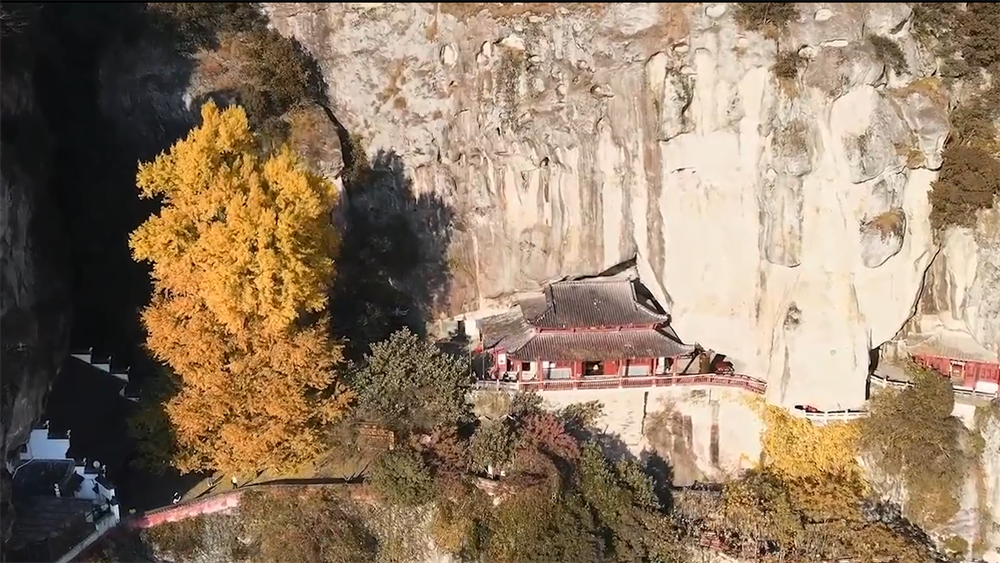
The Hanging Temple
This project aimed to 3D scan the ancient stone lion at the temple’s entrance and create a cultural souvenir while preserving its intricate details and contours. Read on to discover how to use 3D scanning, reverse design, and 3D printing to create cultural souvenirs.
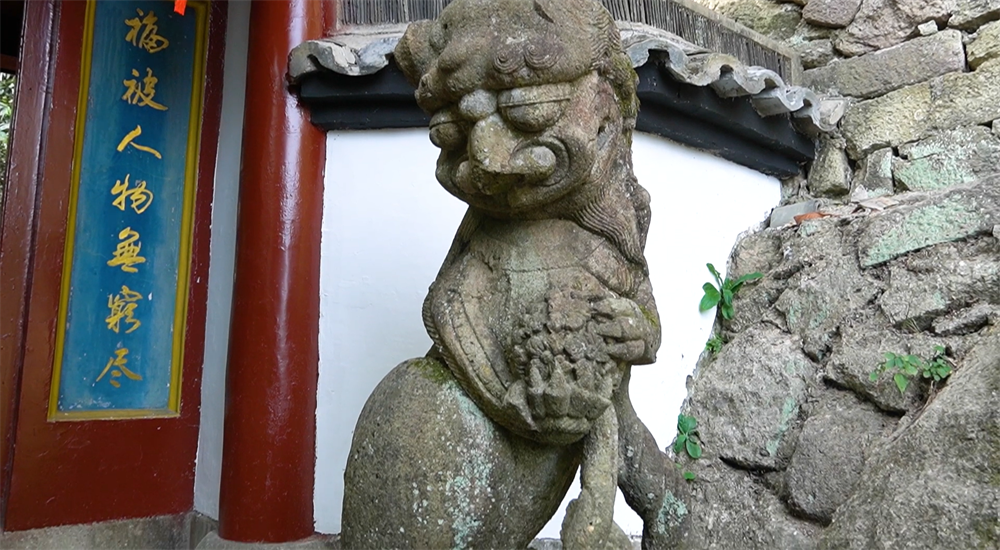
The stone line at the temple’s entrance
Table of Contents
Advantages of using the EinScan Pro HD 3D scanner
The EinScan Pro HD multifunctional 3D scanner has several advantages that make it an ideal tool for this project.
The scanner offers two main advantages. First of all, the 3D scanner is portable. This offers more flexibility, enabling users to access narrow spaces more easily. Portability was important in this project, as the stone lion was situated at the front of the wall, and access to the area was restricted. The scanner’s portability and flexibility allowed the user to scan from different angles and positions, capturing every detail.
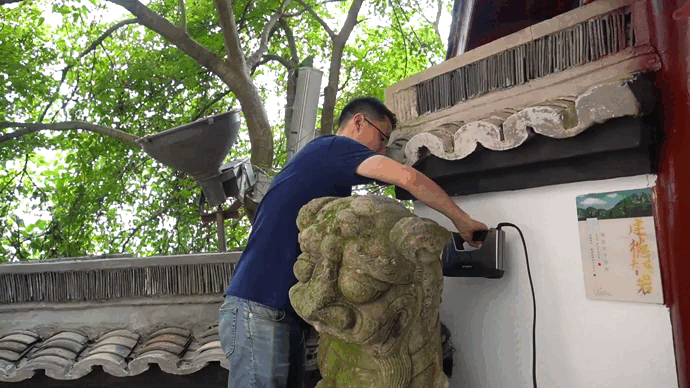
Scanning in a narrow space
Secondly, the scanner’s smooth and fast scanning process made the project efficient. In handheld rapid scan mode, the scan speed can reach 30 frames/s and 1,500,000 points/s. The stone lion, almost as tall as a man, was scanned in only 5 minutes. In handheld HD scan mode, the accuracy can reach 0.045mm, capturing the stone lion’s intricate details and contours in high quality.
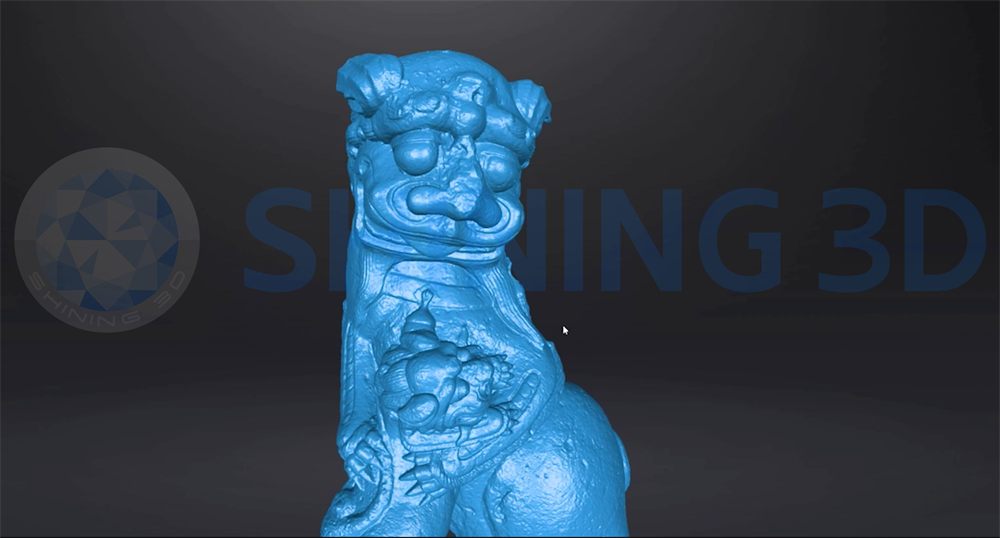
3D scan data of the stone lion
Reverse Eingineering: Creating a Digital Model for 3D Printing
Once the 3D scanning is complete, reverse engineering process can be started immediately. We used the 3D model of the stone lion as a reference and created a digital model that was optimized for 3D printing. We added details, smoothed out rough surfaces, and modified some features to make it more suitable for 3D printing.
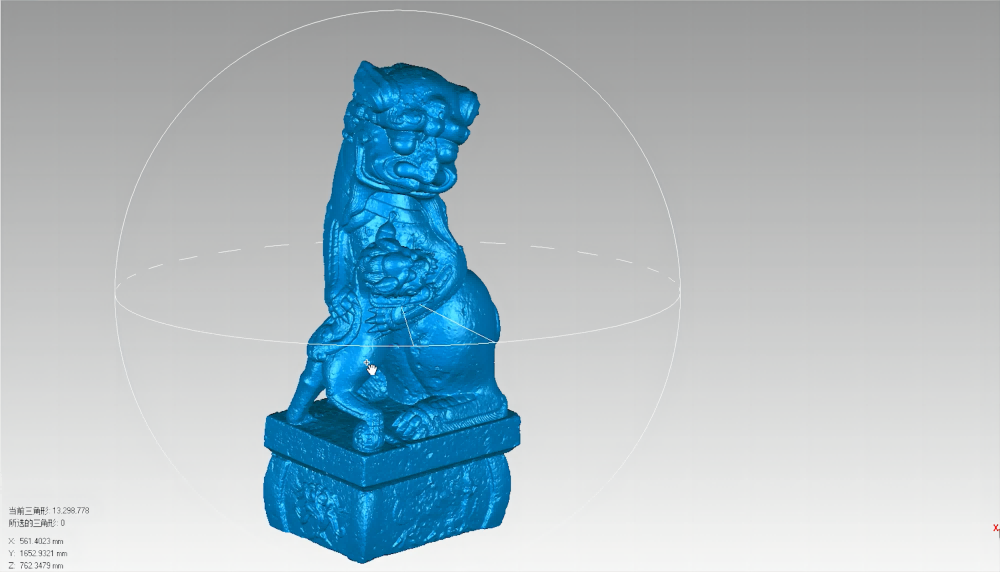
Reverse design in Geomagic Essentials
Users also use SHINING 3D’s Reverse Engineering Design Bundle to seamlessly transition from 3D scanning to design work and 3D printing. The bundle includes a 3D scanner, Geomagic Essentials, and Solid Edge software.
Using the AccuFab-L4K 3D Printer for Mass Production
After acquiring the digital model of the stone lion, we could use 3D printing technology to produce cultural souvenirs. AccuFab-L4K is a high-precision resin 3D printer that prints objects accurately representing design prototypes. It also features 4K resolution for clear surface texture. It supports continuous and stable printing, enabling rapid mass production.
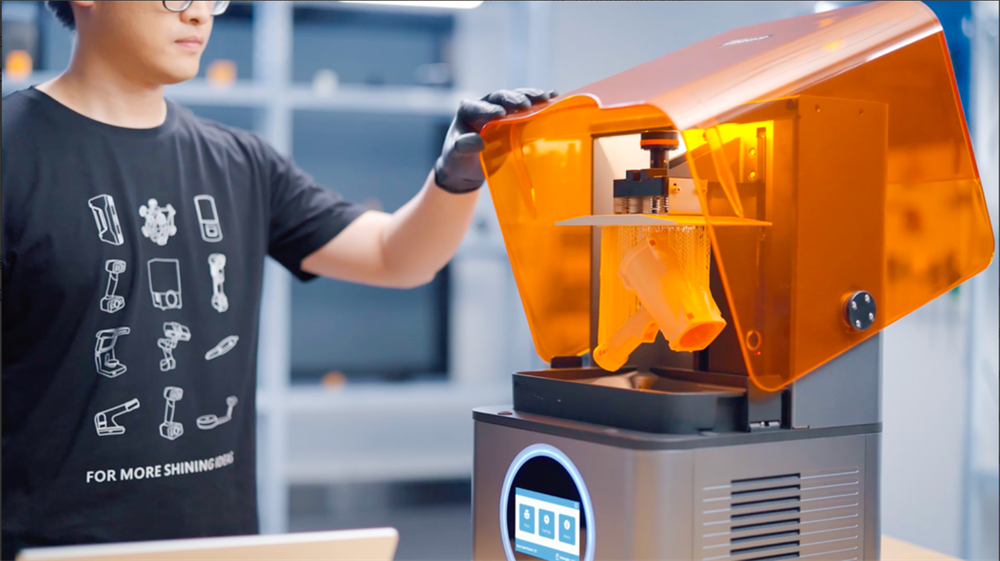
AccuFab-L4K high-precision resin 3D printer
The final product was a beautiful and unique 3D printed lion that could be used as a souvenir.
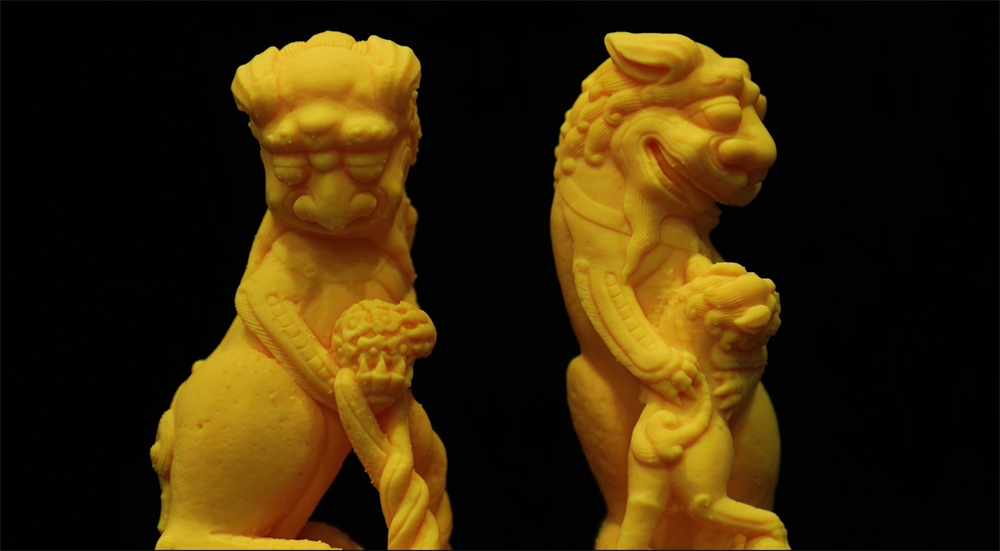
The 3D printed cultural souvenirs
The project in The Hanging Temple demonstrates the potential for the 3D scan to print solution to preserve, recreate and manufacture cultural souvenirs of cultural heritage. With the ability to 3D scan, reverse engineer, and 3D print, the possibilities for innovation are endless.





